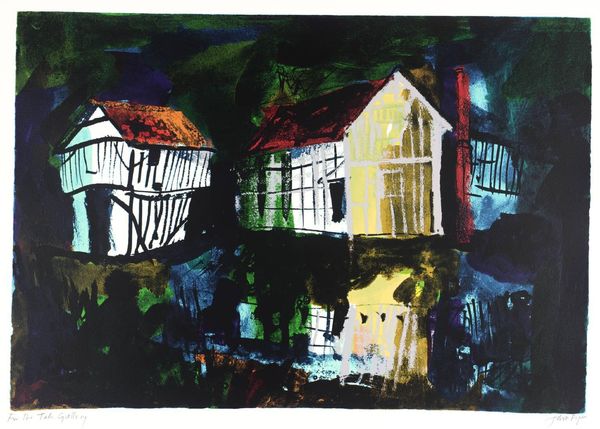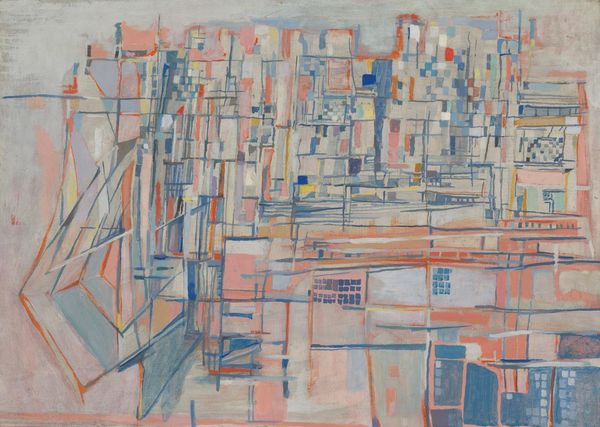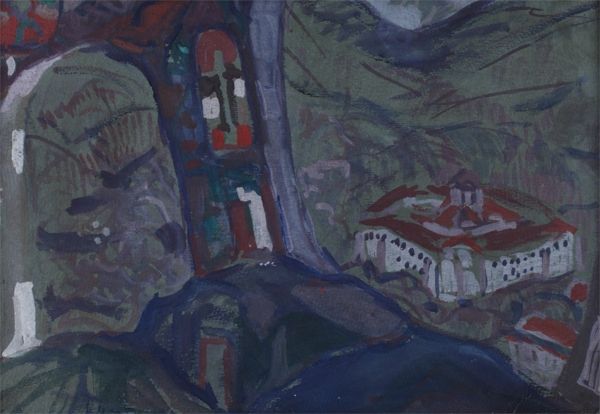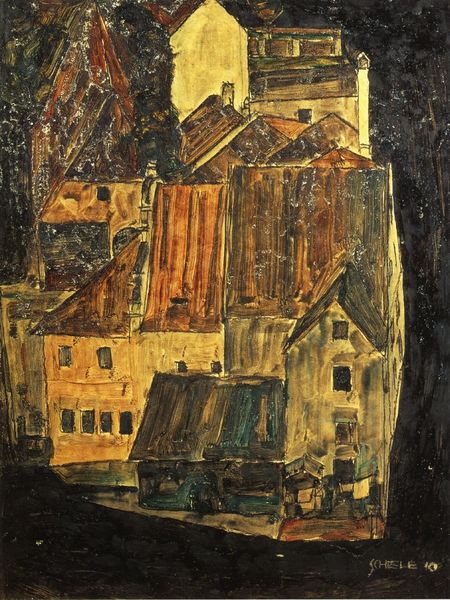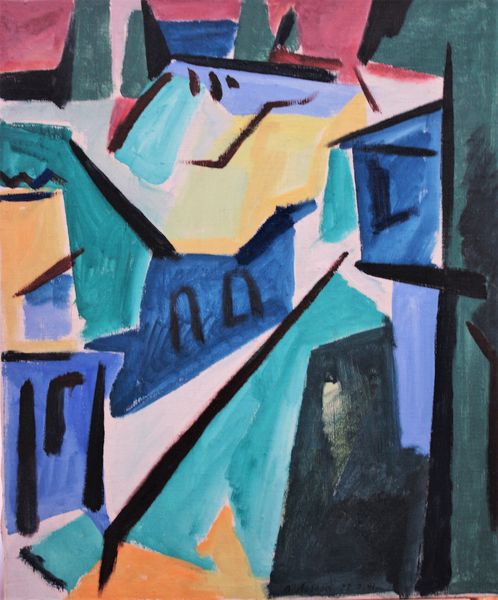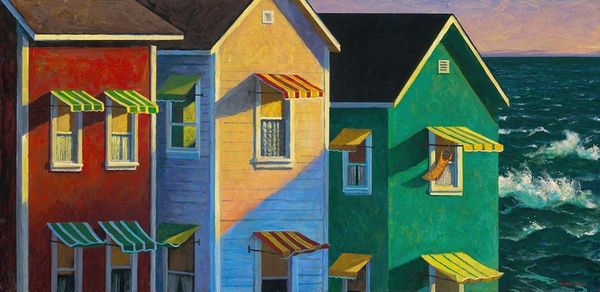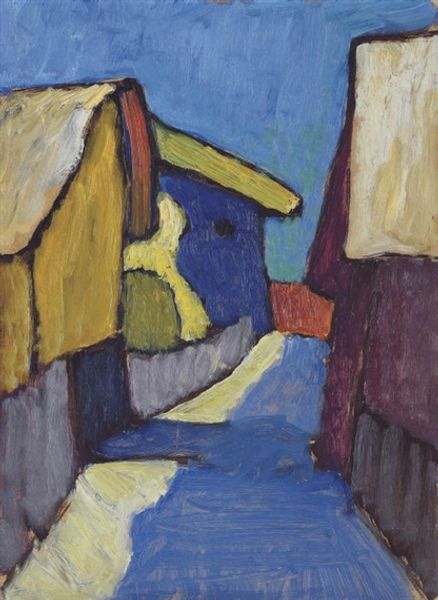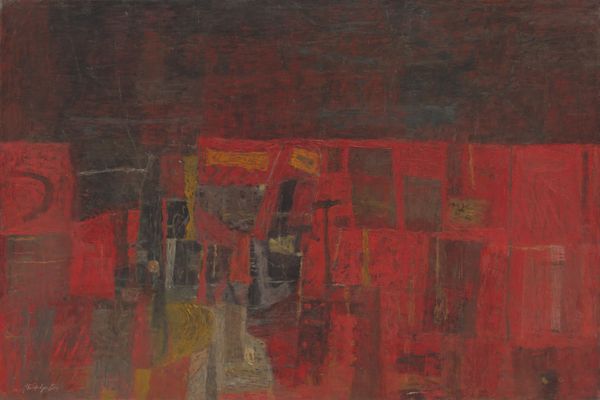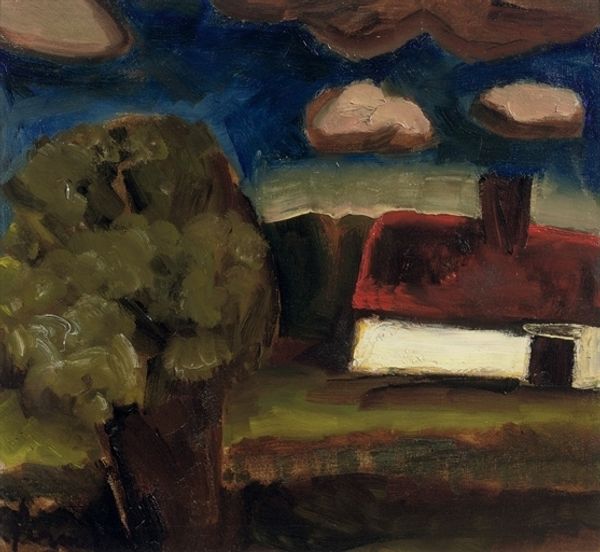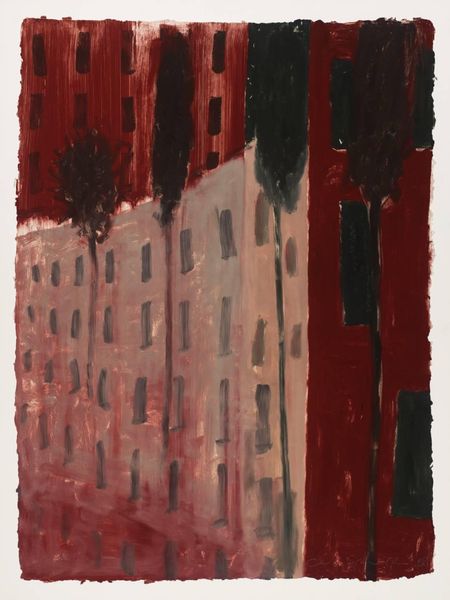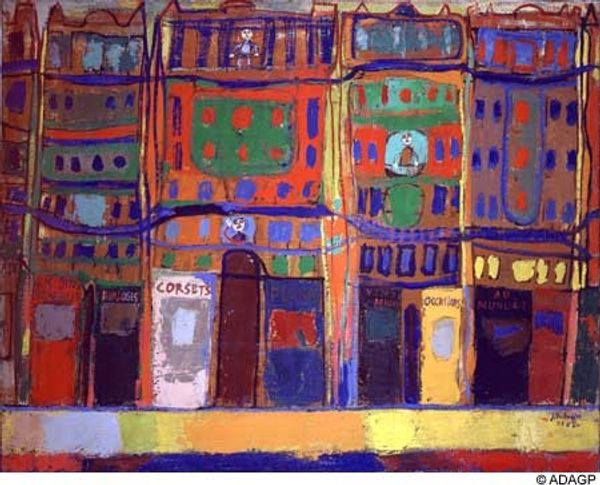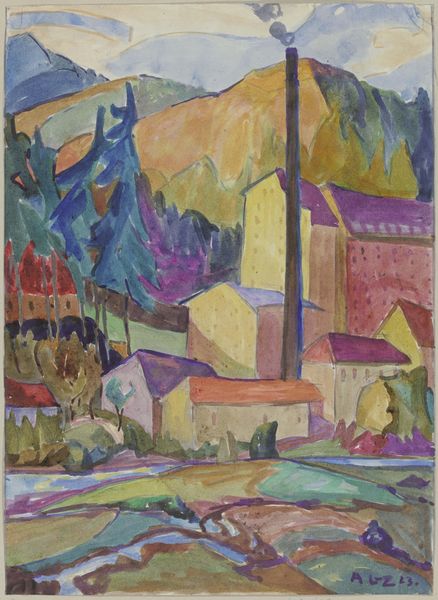
Dimensions: support: 533 x 648 mm frame: 735 x 845 x 100
Copyright: By permission of the estate of the artist | CC-BY-NC-ND 4.0 DEED, Photo: Tate
Editor: This is Sir Matthew Smith's "Cornish Church," currently held at the Tate. I'm struck by the heavy impasto and how the materials themselves seem to contribute so much to the overall feeling of the piece. What do you think about the materiality of it? Curator: The intense colors and thick paint application weren't just aesthetic choices; they reflect Smith's engagement with the physical properties of oil paint. Consider the availability and cost of pigments at the time. How might these constraints have shaped his artistic process? Editor: So the limitations actually fueled his creativity? Curator: Precisely! Also, consider the social context. Smith was working between world wars. How do you think the scarcity of resources might have influenced his approach to art-making and consumption? Editor: It's amazing to think about how material conditions can shape artistic expression so profoundly. I’ll never look at paint the same way again! Curator: Indeed! It highlights the labor involved and challenges our understanding of art as purely intellectual.
Comments
Join the conversation
Join millions of artists and users on Artera today and experience the ultimate creative platform.
tate 8 months ago
⋮
After a period of prolonged illness Smith spent the autumn and winter of 1920 in the village of St Columb Major in Cornwall. Here he completed a number of landscapes, and this is the view from the window of his room. The intense colours and black sky are reminiscent of the Brücke group of German Expressionist painters, but Smith denied a connection, and felt himself to be closer to French art. In Paris in 1919 he knew well the Irish painter Roderic O'Conor, who like Smith had belonged to Gauguin's circle in Brittany. Smith saw his landscapes and nudes, in which he used radiant colour in a similar constructional way. Gallery label, August 2004
